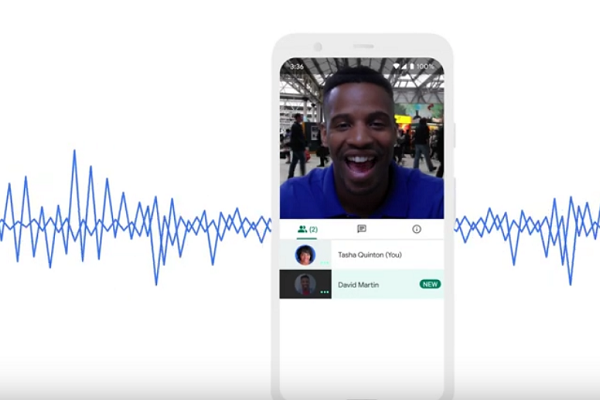Google Meet is Adding AI-Based Noise Cancellation
 Artificial intelligence has begun filtering out unrelated sounds in Google Meet calls, according to a VentureBeat report. The noise cancellation feature, first announced by Google in April, uses AI to identify and counter background noises that can make a call difficult to understand.
Artificial intelligence has begun filtering out unrelated sounds in Google Meet calls, according to a VentureBeat report. The noise cancellation feature, first announced by Google in April, uses AI to identify and counter background noises that can make a call difficult to understand.
De-Noiser
The noise-canceling feature essentially removes any sound that isn’t a human voice speaking near the microphone. As demonstrated in the video below, that can turn a call in a noisy, crowded environment into one that may as well be in a quiet room at home. The AI works by rapidly analyzing all of the sounds being transmitted through the call. Using machine learning techniques in Google Cloud, it tags and identifies the data representing what the speaker is saying, and removes everything else. That’s not without its pitfalls. As noted in the comments of the video, the technology can inadvertently remove intentional sounds, such as a guitar being played, from the call as well.
“To help limit interruptions to your meeting, Meet can now intelligently filter out background distractions—like your dog barking or keystrokes as you take meeting notes,” Google explained in its announcement. Noise cancellation will begin rolling out in the coming weeks to G Suite Enterprise and G Suite Enterprise for Education customers starting with web users and later to mobile users.”
According to what G Suite director of product management Serge Lachapelletold VentureBeat about what he called the “de-noiser,” the technology is still being developed. That’s why there are occasional distortions of the speaker’s voice when the AI is trying to remove unrelated noise. The tech will likely be frequently upgraded in the near future, particularly to distinguish different kinds of human sounds better. Machine noises are easier than a child yelling in the background for the AI to spot as a sound to remove, for instance. The new feature is still rolling out but will be on by default for users, with the option to turn it off if desired.
AI Sounds
There is a lot of potential for an AI capable of distinguishing which sounds are relevant during a conversation. It’s a trick humans do instinctively, filtering out the noise of a party to hear a specific speaker, for instance, but it’s a lot harder to replicate in machines. The noise cancellation feature complements another of Google’s projects, using AI to smooth Duo video messages. For Duo, Google created a new WaveNetEQ algorithm that can learn how to fill brief lapses in sound transmission with sounds that match closely enough to fool listeners into thinking none of the bits of data were lost during the call.
A more direct application of the noise cancellation technology may be Google Assistant. Mistakenly activating voice assistants is a very common incident, with nearly two-thirds of voice assistant users doing so at least once a month. And that’s just the times they notice. Discerning a human speaker when there’s a lot of competing noise is one reason Google launched the Google Assistant “hotword sensitivity” control. The control lets users change the precision needed to awaken the voice assistant. Combined with a recent update to the Voice Match system that allows Google Assistant to better identify who the speaker is, this could be a real boon for many of Google’s branches. Of course, the real test of the noise cancellation tech in Meet may be how well a Zoom clone can perform on Google Meet once Google completes the rollout of the feature.
Follow @voicebotai Follow @erichschwartz
Google Assistant Begins Wake Word Sensitivity Control Roll Out
Bored of Zoom Meetings? Build a Digital Clone to Attend for You








